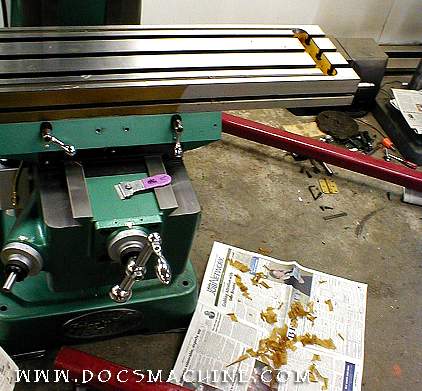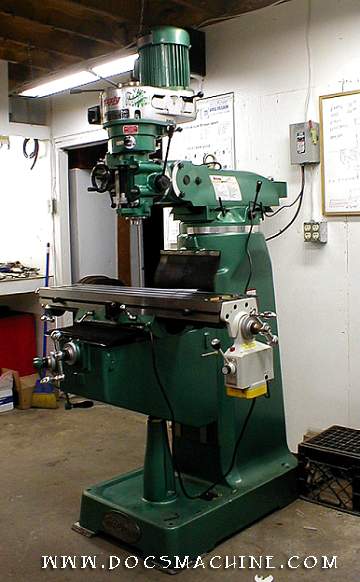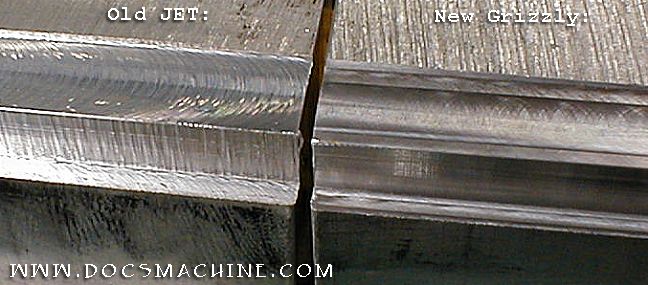This step took the better part of three hours, a pint of diesel and a handful of rags. The table and ways were relatively easy, except for the crook of the dovetail, but all the nooks and crannies on the millhead started taxing my patience.

| The Cosmoline I removed with the careful but judicious application
of a razor blade, being very careful not to mark any machined surfaces.
Residues were wiped off with a mixture of diesel fuel and elbow grease.
Keep the room well-ventilated and wear goggles and solvent-proof rubber
gloves.
This step took the better part of three hours, a pint of diesel and a handful of rags. The table and ways were relatively easy, except for the crook of the dovetail, but all the nooks and crannies on the millhead started taxing my patience. |
 |
 |
After cleaning- and letting the fumes dissipate overnight- we wired
in the new 230Volt service and a disconnect box, with a 4-gang 110V outlet
also on the disconnect for things like worklights. Throw one switch and
shut the whole thing down for the night. There's a constant-hot outlet
already on the wall behind the column, in case I need to keep power to
a DRO or some such.
The table feed had just a pinch of some metal shavings inside, but the gears and grease were clean. The handles have about .003" of freeplay before the table starts to move- which is considerably better than the JET's badly-worn .093" in the middle of it's range. I had to make sure the spindle was well and truly cleaned out- whoever was swinging the Cosmoline gun gave it a good healthy blast up inside. Hey, I'd rather clean out Cosmo than rust! I used a softwood stick as a scraper, and then bits of cloth taped to the stick and dipped in solvent to get the traces. The head runs very smoothly and quietly, and it trammed in nicely, though the screw adjusters for both axis had a little slop, so they occasionally needed a little persuasion to keep from getting too big a movement while fine-tuning. Just to start, I got it dead-nuts on the Y axis, and about .001" on the X. |
| Naturally, I had to put one of my stickers on as a finishing touch.
Fortunately I still had a few green ones left. Serendipity. |
 |
 |
A rare look in the Doc-cave!
Pay no attention to the fellow with the white hair and black T-shirt. He's not supposed to be out from behind the curtain. Just past the mill is the Rockwell 1HP Vari-Drive drill press, and just past that is the 1949 Logan lathe. The main workbench on the right is actually unusually clean. The shed entrance is just visible to the left, and the doorway to the main shop is unseen on the right edge. To the photographer's right is the '56 11" Logan, and behind him is the JET mill. The orange thing is a pallet jack, and the blurry thing is the Emergency Backup Cat. |

Was it all worth it? You be the judge.
These are two rough-sawed blocks of 1" 6061 aluminum. I milled the
one on the left with the old JET, and the one on the right is the very
first cut made with the new Grizzly. I used the same 3/8" four-flute endmill,
the same R8 collet and the same vice.
The left was made with the JET's highest currently-capable speed, or
about 1,100 rpm. The Griz was made at it's top speed of 2,720. Both were
hand-cranked. The dark lines on the Griz cuts actually aren't there- they're
kind of a moire` effect in the photo.
All text, photos and graphics Copyright 2003, Doc's Machine & Airsmith Services. All rights reserved. Unauthorized duplication or use of photos or graphics prohibited. We are not affiliated with Grizzly Industrial in any manner.